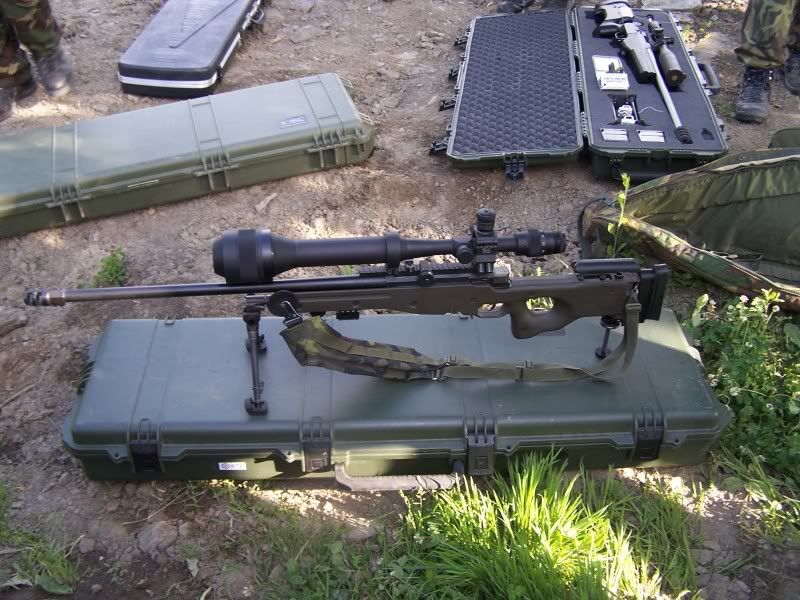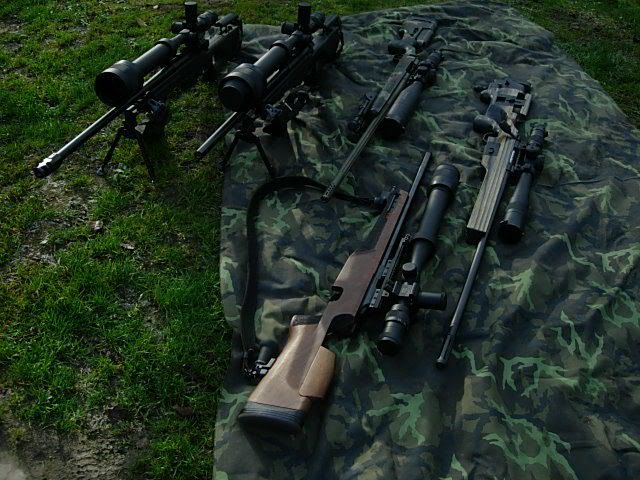Thought I would share some thoughts on USO sn9’s as not much is normally written about that model, in particular the 10-42x80.
 [/img]
[/img]
First I like USO optics, great scopes and great people. The scopes work better for me than S&B, Swaro, Nightforce, Loopy , Khales etc…….they are the ones I can remember having anyway.
Last winter I did some testing at dusk between the sn9 scopes and a 5-25x58 T Pal, sn3 3.8-22x44 and just for fun a sn4. The testing was not very scientific, just my perceptions gained over a few weeks of observation near dark at a couple of targets about 370m away.
Conclusions from it were I guess to be expected, the 80mm sn9’s were easily the best performers, the objective diameter allows the use of more magnification without loosing the image and or extra shooting time. The other scopes a 58mm TPal and 44mm sn3 were all so similar it was hard to justify the 58mm objective over the 44mm – you did have to reduce the magnification a little on the 44mm model to get the same image quality as the 58mm, true but I was surprised by how little.
Back to the sn9’s, I guess it is really seen as a long range optic with loads of elevation however I have been using mine for short range. With 42x no spotting scope is required, this is important for my particular circumstance where shots are not spotted,and time limits are usually 2mins for 5 rounds. I found in the past that if trying to use a spotting scope it is very easy to change body position and spread shots.
Out to 500m 338 and 308 holes have been easier to spot than with my Optolyth TBS 100 spotting scope. So the sn9 does double duty as a spotting scope – right where you want it in front of your eye. This is something I tried before with a 42x NXS but it did not work for me. Resolution is on a whole different planet. One of my test objects is a screw thread at 124m, a decent scope can resolve the sides of the threads, an excellent scope sn9 can resolve the whole thread and have enough resolution to distinguish lands from groves on the thread around the diameter. One thing which may help the excellent resolution on the sn9 is the lack of internal crap within the scope and also the fact that you are always looking through the optical centre which are a couple of benefits of the external adjustment system.
Mounting and picatinny rails – in short get the strongest, picatinny rail you can with the least flex in it, ideally the front ball ring mount on the sn9 should be mounted above the receiver on the picatinny rail – most solid position without flex, this is just possible on an AI 338 (see pic above) and just slightly forward on a 308 AI. On bigger stuff like a EDM Arms 338 there will be plenty of room.
I have only used the scope in one international competition so far but results were very promising .
The 80mm objective allows focus down to 50 yards at full magnification………so I’ve put one on my Sako 22LR and a couple of others as well.
 [/img]
[/img]

First I like USO optics, great scopes and great people. The scopes work better for me than S&B, Swaro, Nightforce, Loopy , Khales etc…….they are the ones I can remember having anyway.
Last winter I did some testing at dusk between the sn9 scopes and a 5-25x58 T Pal, sn3 3.8-22x44 and just for fun a sn4. The testing was not very scientific, just my perceptions gained over a few weeks of observation near dark at a couple of targets about 370m away.
Conclusions from it were I guess to be expected, the 80mm sn9’s were easily the best performers, the objective diameter allows the use of more magnification without loosing the image and or extra shooting time. The other scopes a 58mm TPal and 44mm sn3 were all so similar it was hard to justify the 58mm objective over the 44mm – you did have to reduce the magnification a little on the 44mm model to get the same image quality as the 58mm, true but I was surprised by how little.
Back to the sn9’s, I guess it is really seen as a long range optic with loads of elevation however I have been using mine for short range. With 42x no spotting scope is required, this is important for my particular circumstance where shots are not spotted,and time limits are usually 2mins for 5 rounds. I found in the past that if trying to use a spotting scope it is very easy to change body position and spread shots.
Out to 500m 338 and 308 holes have been easier to spot than with my Optolyth TBS 100 spotting scope. So the sn9 does double duty as a spotting scope – right where you want it in front of your eye. This is something I tried before with a 42x NXS but it did not work for me. Resolution is on a whole different planet. One of my test objects is a screw thread at 124m, a decent scope can resolve the sides of the threads, an excellent scope sn9 can resolve the whole thread and have enough resolution to distinguish lands from groves on the thread around the diameter. One thing which may help the excellent resolution on the sn9 is the lack of internal crap within the scope and also the fact that you are always looking through the optical centre which are a couple of benefits of the external adjustment system.
Mounting and picatinny rails – in short get the strongest, picatinny rail you can with the least flex in it, ideally the front ball ring mount on the sn9 should be mounted above the receiver on the picatinny rail – most solid position without flex, this is just possible on an AI 338 (see pic above) and just slightly forward on a 308 AI. On bigger stuff like a EDM Arms 338 there will be plenty of room.
I have only used the scope in one international competition so far but results were very promising .
The 80mm objective allows focus down to 50 yards at full magnification………so I’ve put one on my Sako 22LR and a couple of others as well.


